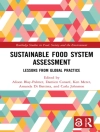One of the crucial challenges in the energy sector is the efficient capture and utilisation of CO2 generated from fossil fuels. Carbon capture and storage technologies can provide viable alternatives for energy intensive processes, although implementation of large-scale demonstrators remains challenging. Therefore, innovative technologies are needed that are capable of processing CO2 emission from a wide range of sources, ideally without additional fossil energy demand (e.g. solar driven or overcoming the limits of photosynthesis). This book covers the most recent developments in the field of electrochemical reduction of CO2, from first-principle mechanistic studies to technological perspectives. An introduction to basic concepts in electrochemistry and electrocatalysis is included to provide a background for newcomers to this field. This book provides a comprehensive overview for researchers and industrial chemists working in environmental science, electrochemistry and chemical engineering.
Jadual kandungan
Introduction to the Electrochemical and Photo-electrochemical Reduction of CO2;
Bio-inspired and Bio-electrochemical Approaches in CO2 Reduction Catalysis;
Copper Catalysts for the Electrochemical Reduction of Carbon Dioxide;
Single-crystal Surfaces as Model Electrocatalysts for CO2 Reduction;
Homogeneous M(bpy)(CO)3X and Aromatic N-heterocycle Catalysts for CO2 Reduction;
DFT Modelling Tools in CO2 Conversion: Reaction Mechanism Screening and Analysis;
Electrocarboxylation in Ionic Liquids;
IR Spectro-electrochemistry and Group-6 a-diimine Catalysts of CO2 Reduction;
Probing CO2 Reduction Intermediates Employing in situ Spectroscopy and Spectrometry;
Surface-selective and Time-resolved Spectroelectrochemical Studies of CO2 Reduction Mechanisms
Mengenai Pengarang
David J. Fermin is a Professor in the School of Chemistry at the University of Bristol, UK. He has over 15 years’ experience in dynamic electrochemistry and photoelectrochemistry.












